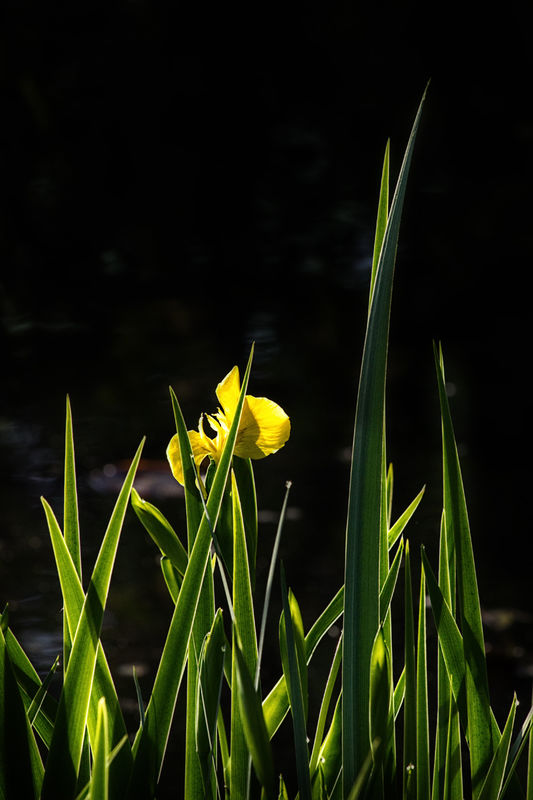Exposure compensation
Oct 9, 2019 08:20:55 #
Even though I have the exposure compensation on camera [+/-] I have never used it. I adjust exposure in post process in lightroom.
When do you exactly use this feature on camera? I am not using that. Thank you for your help.
When do you exactly use this feature on camera? I am not using that. Thank you for your help.
Oct 9, 2019 08:26:26 #
Primarily in aperture priority or shutter priority shooting modes when I want a different exposure from what the camera's metering system chose. For small changes, shooting in raw and making the adjustment in the editor works equally well.
In addition to f8lee's classic examples written below (also, snow scenes), I often shoot in high contrast lighting situations, and may want a silhouetted foreground, or the opposite - to keep the background as dark as possible.
In addition to f8lee's classic examples written below (also, snow scenes), I often shoot in high contrast lighting situations, and may want a silhouetted foreground, or the opposite - to keep the background as dark as possible.

Oct 9, 2019 08:27:41 #
This is meant to be used in situations where the camera’s Meter might be “fooled”. For instance, a bright day at the beach where the meter puts too much weight on the bright sky; your subject might be rendered as a silhouette unless you compensate by “telling” the camera to overexposed the shot a couple of stops. That would likely blow out the sky but at least your subject would be better captured.
Another classic scenario is a “black cat on a dark blanket” where the meter, in its blind attempt to render an average 18% grey, would make an exposure that is overly light. In this case you would set the compensation to underexposed a stop or two in order to achieve the black.
Another classic scenario is a “black cat on a dark blanket” where the meter, in its blind attempt to render an average 18% grey, would make an exposure that is overly light. In this case you would set the compensation to underexposed a stop or two in order to achieve the black.
Oct 9, 2019 08:32:08 #
Jbravi wrote:
Even though I have the exposure compensation on camera [+/-] I have never used it. I adjust exposure in post process in lightroom.
When do you exactly use this feature on camera? I am not using that. Thank you for your help.
When do you exactly use this feature on camera? I am not using that. Thank you for your help.
If you shoot RAW, most of these settings can be applied to the file in Post Processing. At least they can with my Sony cameras and the Sony RAW processor. This saves a lot of time trying to figure out compensation, vivid/landscape, contrast, sharpness, etc., before you take the shot.
Oct 9, 2019 08:41:37 #
Thanks to everyone who contributed to this question. It was good to see what others felt about that question because I ,also, was a little put-off by the When& Where I should intervene with this tool. I have to do in in menu and don't like that option....and wish I had a wheel on top like some cameras do.
Thanks again guys !
Thanks again guys !
Oct 9, 2019 08:42:45 #
Even when shooting RAW, the best practice is to come as close to the correct exposure as possible. EC allows you to compensate for variables in the scene since most metering systems are calibrated to a specific standard.
Oct 9, 2019 08:48:44 #
Blair Shaw Jr wrote:
Commonly seen on UHH are white birds against dark backgrounds where the white has little to no detail because of over-exposure. I learned early on with my bridge camera, Canon sx50 and shooting jpg, to set exposure compensation to -2 on white pelicans in dark river waters ... I ,also, was a little put-off by the When& Where I should intervene with this tool...

Oct 9, 2019 08:53:03 #
mizzee
Loc: Boston,Ma
I use it most when lighting is difficult or extremely variable and the camera gets confused. I find it extremely useful!
Oct 9, 2019 08:54:53 #
mizzee wrote:
And like most tools in the camera, the more you use, the more it becomes second-nature, automatic - no thinking required I use it most when lighting is difficult or extremely variable and the camera gets confused. I find it extremely useful!

Oct 9, 2019 08:58:06 #
"Even when shooting RAW, the best practice is to come as close to the correct exposure as possible"
It is impossible to disagree with this statement. Exposure with digital cameras is not the nightmare it used to be, especially when we were using slide film. Today we have instant feedback and a histogram to guide us toward a good exposure.
Exposure compensation can be done in AUTO or MANUAL modes and as it has been already pointed out to you that it comes very handy with subjects that are not a middle tonality. That middle tonality we keep calling "middle gray." It is my understanding that some modern digital cameras can do exposure compensation in the Manual mode but AUTO is what I have always used for the exposure compensation button.
As Linda said, minor adjustments are no sweat using in post exposure compensation and except in the case of opening the shadow areas trying to fix a clipped highlight is almost impossible.
Opening the shadows could show the ugly face of noise.
It is impossible to disagree with this statement. Exposure with digital cameras is not the nightmare it used to be, especially when we were using slide film. Today we have instant feedback and a histogram to guide us toward a good exposure.
Exposure compensation can be done in AUTO or MANUAL modes and as it has been already pointed out to you that it comes very handy with subjects that are not a middle tonality. That middle tonality we keep calling "middle gray." It is my understanding that some modern digital cameras can do exposure compensation in the Manual mode but AUTO is what I have always used for the exposure compensation button.
As Linda said, minor adjustments are no sweat using in post exposure compensation and except in the case of opening the shadow areas trying to fix a clipped highlight is almost impossible.
Opening the shadows could show the ugly face of noise.
Oct 9, 2019 09:02:15 #
Jbravi wrote:
Even though I have the exposure compensation on camera [+/-] I have never used it. I adjust exposure in post process in lightroom.
When do you exactly use this feature on camera? I am not using that. Thank you for your help.
When do you exactly use this feature on camera? I am not using that. Thank you for your help.
When shooting with a EOS 5DIV you have listed, you should be exposing to the right (ETTR). That is: the meter should register on the right-side ( + ) of the 0-mark on the meter. A feature of the EOS 5DIV model is the ability to shoot in Manual, with AUTO-ISO and with Exposure Compensation (EC). For most older EOS models, if you set AUTO-ISO in Manual, as you adjusted the aperture or shutter speed, the camera would adjust the ISO to place the metering at the center 0-mark. Now, like using EX in A / P / S, when you're in manual you can use EC to establish a metering above (or below) the 0-mark. For these other exposure modes, you use EC with a fixed or auto ISO to maintain a consistent exposure to the right (or left) of the zero mark.
Why overexpose? Noise control and 'true white' in your RAW files. The links demonstrate the ETTR concepts.
Recommended resizing parameters for digital images
ETTR in Practice
Your Nikon model is 'ISO invariant'. Technically, you can adjust an underexposed image in post with a negligible impact of noise (on the RAW file). The ETTR techniques still apply, particularly when shooting at an ISO value above the base ISO-100 of the camera.
Oct 9, 2019 09:05:33 #
I use EC when there’s any chance a portion of an image to get blown out. Simple as that.
Oct 9, 2019 09:15:18 #
camerapapi wrote:
"Even when shooting RAW, the best practice is... (show quote)
If we each fill-in our own understanding of "correct exposure", then we cannot disagree.
But, some of us RAW shooters believe "correct" is pushing the data capture aspects of the RAW file for the subsequent (and the required) aspect of processing the RAW file. Your noise performance of an EOS model, and in general most DLSRs, will benefit from exposing to the right and adjusting that exposure / brightness in post rather than needing to brighten the image that adds noise in post. Shadows that need to be darkened in post will have much less noise as compared to the image that needs to brighten those areas.
So, "correct" needs to be correctly defined for each individual photographer and camera model to have the same understanding / definition. Although linked above, I'll link here again to emphasize the ETTR concept with a series of actual examples of the concept in practice: ETTR in Practice
Oct 9, 2019 09:35:21 #
Just to get into the weeds a bit, I'd say you should dig into your manual about how it is implemented. I was surprised to find on my Canon that auto lighting optimizer still overrode ec changes, so you might not get the effect you are after. I think Nikons have similar active-d settings. Also my camera can take ec out of shutter speed if it runs out of iso but it doesn't change the displayed shutter speed value. If you shoot full manual with no auto-iso there is no need for it, of course, you can roll your own.
Oct 9, 2019 10:12:01 #
CHG_CANON wrote:
When shooting with a EOS 5DIV you have listed, you... (show quote)
Thank you friends for all your valuable input, much appreciated!
If you want to reply, then register here. Registration is free and your account is created instantly, so you can post right away.






